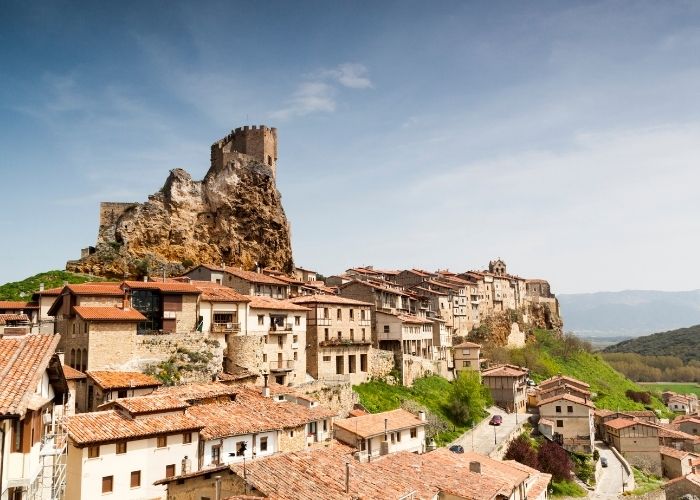CASTILLA Y LEON – Fewer and fewer people live in the vast Castilla y León, in the Spanish interior. After Sunday’s elections in this, geographically the largest of Spain’s 17 autonomous regions, the media have focused attention on the countryside.
In politics, the problems of the countryside are often overlooked. However, on Sunday, depopulation and its consequences were one of the main themes of the election campaign. So much so that one of the participating parties campaigned under the name España Vaciada (The Empty Spain). Furthermore, the chances of the party entering parliament seem to be feasible according to the polls.
Population decline since 2009
The fact is that the population of Castilla y León has been declining since 2009. During the last 20 years, six of Castilla y León’s nine provinces have lost inhabitants, as have 86% of its municipalities. In more than half of the municipalities, no children will have been born by 2021 and less than 20% of the municipalities still have public nursery, primary or secondary schools on their territory. In other words, almost eight out of ten municipalities in this area (77%) are at risk of depopulation. A commonly used threshold for depopulation is a population density of less than 12.5 inhabitants per km2). ‘If nothing is done from outside with these villages, they are doomed to disappear, there is no solution’, explains a demographer. Consequently, the loss of inhabitants means that those who remain in the villages have fewer and fewer facilities.
History
The process of depopulation in Castilla y León goes back a long way. In particular, the development of industry in the Basque Country, Catalonia and Madrid in the second half of the last century played a role. As a result, hundreds of thousands of Castilians, especially from the poorest population groups, went in search of better opportunities. In the 1960s, 1970s and almost into the 1980s, the situation seemed somewhat better because, although many people left, this was compensated by a high fertility rate,’ explained Alberto del Rey, professor of sociology and doctor of demography at the University of Salamanca (USAL).
Decline in birth rate
However, the decline in the birth rate during the 1980s revealed a more serious demographic problem. ‘In the 1980s, people with somewhat higher education joined the population, they needed jobs that were not offered in the villages,’ Del Rey explained.
Migrants
In the mid-1990s, the arrival of millions of migrants, mainly from Latin America and Eastern Europe, helped to camouflage depopulation. Yet the lack of demographic strength compared to the rest of the country became apparent. ‘Castilla y León saw that it was falling behind,’ summarises José Luis Sánchez, professor of human geography at the University of Salamanca. After the great financial crisis of 2008, the influx of migrants decreased. Immediately it became clear that the regional population was not providing growth. An internal redistribution took place; there were not many people left in the countryside to leave, young people kept leaving and a second phenomenon occurred that had not occurred before and that set alarm bells ringing: the loss of dynamism in the provincial capitals’, stressed José Luis Sánchez.
An ‘irreversible’ process
The two experts agree that the current situation has reached an irreversible point. “From the point of view of the population, it is not possible to reverse the process. In many villages, there are no young people who can have children. There are villages where no births have been registered for 10 or 15 years and there are many elderly people. There are villages where the average age is more than 60 years,” said Del Rey.
This makes it impossible to promote policies to boost the birth rate. ‘If there are no women between the ages of 20 and 35 in the villages, who will have children,’ Del Rey wonders. ‘We are in negative growth. In the countryside, more people generally die than are born,’ says Sánchez. ‘The region’s economy is unable to create jobs, even for its own population, let alone for people from outside. The prospects are extremely compromised,’ he adds.
‘It is an absolute loss of quality of life’
The consequences of depopulation have been felt for years. The mass closure of medical centres, bars, bank branches, pharmacies and even churches is making life increasingly difficult for those who choose to stay or have no alternative. The serious tragedy of today’s depopulation is that the people who remain in the villages have fewer and fewer facilities at their disposal. It is an absolute loss of quality of life,’ says Del Rey. ‘We have villages with infrastructure problems, poor quality internet, no telephone coverage…People who live in depopulated areas don’t have the same rights and services as people who live in other places, and that’s where the emphasis should be,’ he adds.
The opinion of Sánchez
Prime Minister Sánchez also shared this consideration. These people are citizens like everyone else. They have the right to decent public services of the same quality as any citizen. Either the government supports these services, or these people will eventually leave,’ the Spanish Prime Minister concludes.


